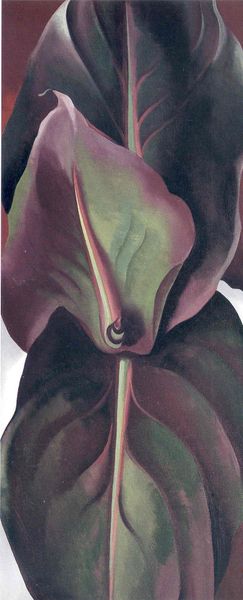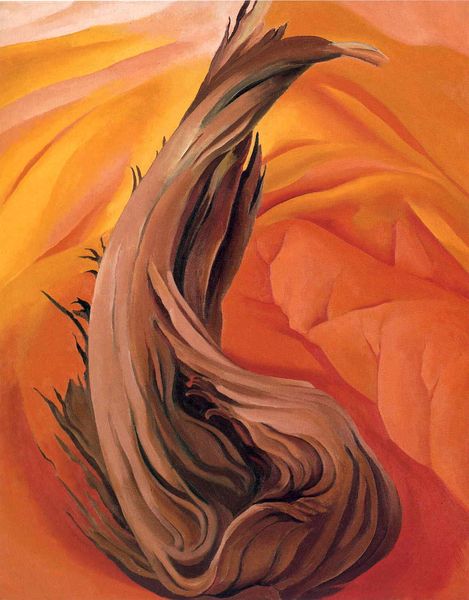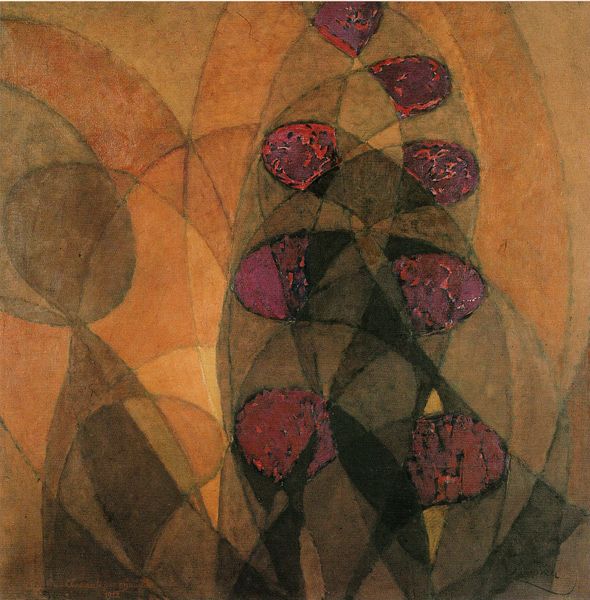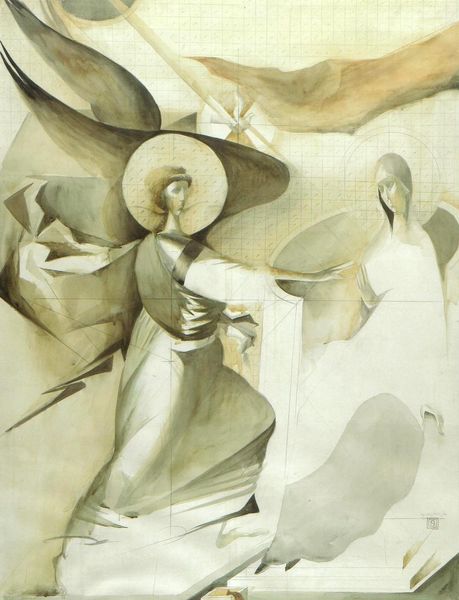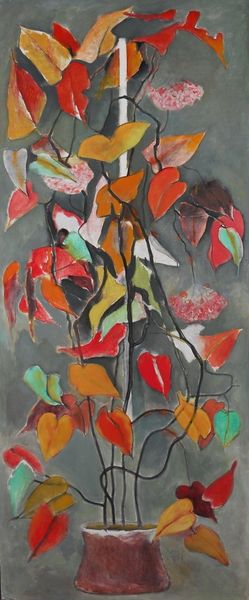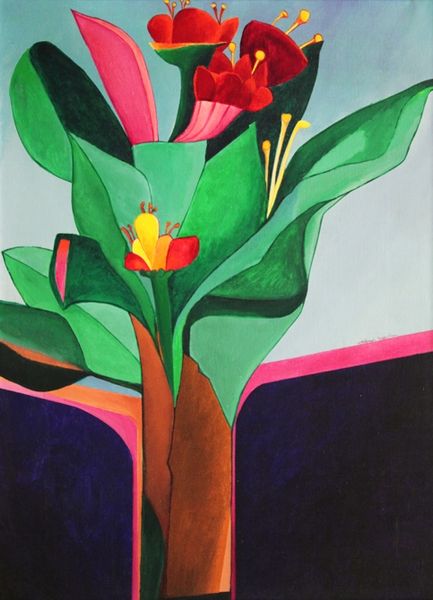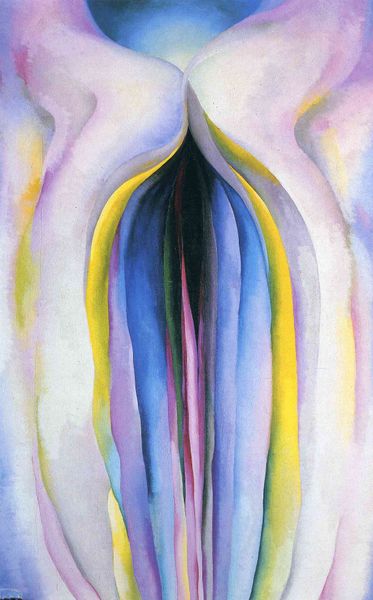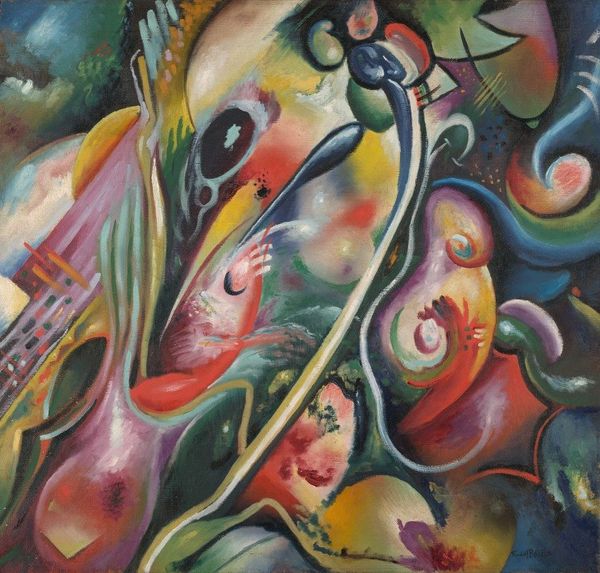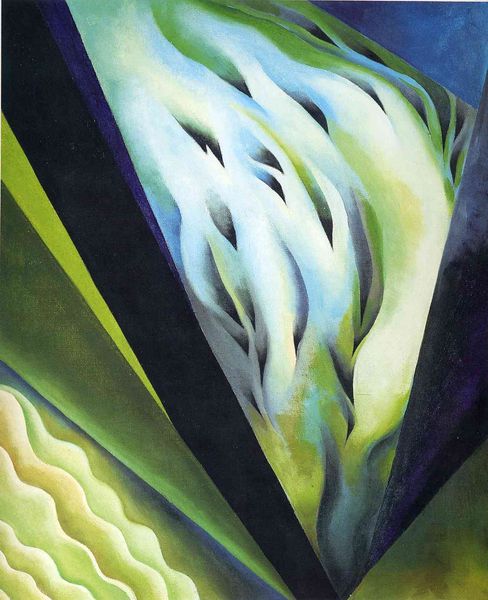
painting, acrylic-paint
#
tree
#
organic
#
abstract painting
#
painting
#
landscape
#
acrylic-paint
#
acrylic on canvas
#
forest
#
plant
#
abstraction
#
modernism
Copyright: Georgia O'Keeffe,Fair Use
Editor: Here we have Georgia O'Keeffe's "Autumn Trees - The Maple," painted in 1924, employing acrylic on canvas. What strikes me is the organic yet almost unsettling abstraction of the tree's form; it feels both familiar and alien. What do you make of its composition? Curator: The work presents a fascinating interplay between representation and abstraction. Note how O'Keeffe simplifies the organic forms of the tree, reducing them to elegant, undulating lines and blocks of color. This pushes the motif away from mere mimetic representation towards a deeper exploration of form itself. Consider, too, the dynamism in the curving lines, which seems to imply movement and growth. Editor: The colors are also quite muted, yet the forms feel bold. Does this tension add to the interpretation? Curator: Precisely. The restrained palette, primarily consisting of earth tones accented by muted blues and greens, creates a subtle yet powerful emotional resonance. O'Keeffe’s expert manipulation of color establishes depth and highlights the forms without resorting to strong contrast, thereby focusing our attention on the intrinsic qualities of the painted shapes. Editor: So, we are seeing nature represented not for its own sake, but as a vehicle for exploring shape, form and color? Curator: Precisely. One could argue O’Keefe employed the natural world as a starting point for a deeper exploration of abstract formal concerns, subtly blurring the line between what we see and how we perceive it. Editor: I appreciate how looking at the painting this way helps me move beyond simple representation. It’s about how she builds forms. Curator: Indeed. It allows a greater understanding not only of this work but how other Modernist artists were engaging with the world around them through art.
Comments
No comments
Be the first to comment and join the conversation on the ultimate creative platform.

